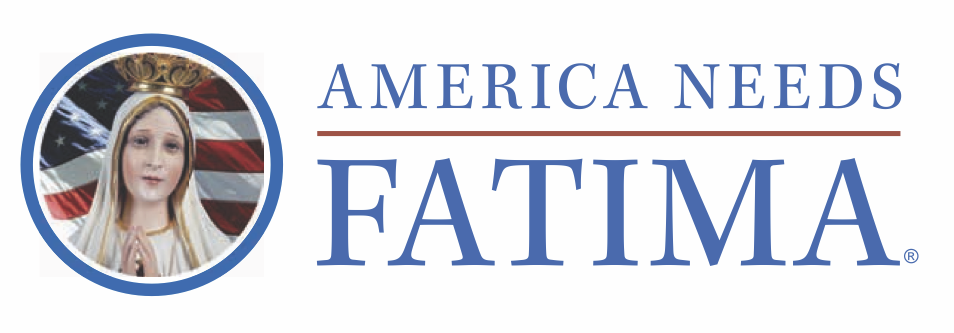
TOPICS:
"Do as I say, and there will be peace."
May 13, 2024 / Written by: Stacie Hiserman
The Fr. Pavlicek Story
In the heart of twentieth-century Austria, a remarkable tale unfolded amidst the turbulent winds of political upheaval. One man stood resolute against the encroaching tide of communism. His name was Fr. Pavlicek, and his weapon was but a string of beads and fervent prayers. The unlikely hero in this tale of defiance was none other than the Holy Rosary itself, which miraculously expelled communists from Austria in 1955.
Setting the Stage
In post-World War II Europe, communism spread and divided the continent. Austria, in Central Europe, faced this upheaval as the Iron Curtain descended. The proud Austrian people, rooted in Catholicism, confronted the atheistic threat. Amidst this, Father Petrus Pavlicek emerged, his life intertwined with his homeland's fate. Born during the First World War's aftermath, he faced tragedy early, losing his mother. Raised in Vienna and Olomouc, his life was shaped by conflict.
As a boy, he felt a calling to religious life but later became indifferent. In 1935, during a serious illness, he experienced a conversion, reaffirming his vocation. Inspired by Saint Francis of Assisi, he joined the Franciscan order, taking the name Petrus, and was ordained in 1941.

Father Petrus faced peril when arrested by the Gestapo, accused of draft evasion. On May 13, 1942, he underwent a trial and was ultimately acquitted. Despite this, he later marched towards the western frontlines as a paramedic, only to be captured by American forces on August 15, 1944. Confined in Cherbourg-Octeville, he served as a Prisoner of War Camp priest, providing solace to fellow captives.
During his captivity, Father Pavlicek learned about Our Lady of Fatima for the first time through a humble brochure, sparking a profound spiritual awakening. This encounter ignited a fervent desire to heed Our Lady's call for peace and reconciliation. Upon his release on July 16, 1945, Father Pavlicek embarked on a new chapter of service in Vienna.
Fr. Petrus Battles Communism at Home
Upon returning to his homeland, Fr. Pavlicek was dismayed to find it firmly entrenched in Russian communist rule. After the war, like Germany, Austria was divided into four occupational zones to be administered by the Allies – America, England, France and the Soviet Union. The last was given Lower Austria, with its oil fields, agriculture and industry. While Germany returned to its native culture within two years, Austria was not so fortunate.

However, Fr. Pavlicek was to make a pilgrimage to the Marian shrine Mariazell in February 1946, which proved pivotal. Amidst prayers and penance, Father Pavlicek experienced an interior locution from Our Lady, instructing him: "Do as I say, and there will be peace." With unwavering resolve, he founded the Crusade of Reparation of the Holy Rosary for Peace in the World in February 1947.
In September 1948, Father Pavlicek introduced the Crusade’s Acts of Reparatory Devotion in a Capuchin church in Vienna. These devotions, crowned by the Holy Sacrifice of the Mass, included sermons, confessions, blessings of the sick and infirm, and the recitations of the Holy Rosary. Father Pavlicek termed these devotions "assaults of prayer," likening them to sieges lasting up to five days, as he believed that "Peace is a gift of God, not the work of politicians." With this conviction, he emphasized the necessity of prayers that "storm heaven as soldiers storm a fort."
Public Rosary Rallies Begin
The monthly processions with the statue of Our Lady of Fatima grew significantly. Father Pavlicek enhanced them by initiating an annual event where all Viennese parishes honored the Queen of Heaven on September 12. This date coincides with the feast of the Name of Mary, established in 1683 by Pope Innocent XI to commemorate the Christian victory over Turkish invaders in Vienna through the intercession of the Blessed Virgin.
Despite initial opposition, especially from Vienna's Cardinal Theodor Innitzer, Father Pavlicek persevered. The Cardinal initially declined to participate but eventually relented due to public pressure. By contrast, Prime Minister Leopold Figl wholeheartedly embraced the Crusade, pledging unwavering support and attendance. His successor, Prime Minister Julius Raab, upheld this tradition, showing a harmony between Church and State.
By 1955, over half a million Austrians had committed to daily prayers to Our Lady of Fatima, with the Crusade's influence extending to neighboring Germany and Switzerland. This fervent devotion, coupled with Marian processions, mobilized spiritual support against the encroachment of communism.
An Unexpected Turn
In March 1955, the Soviets unexpectedly invited Austria to a conference, prompting Prime Minister Raab's plea for intensified prayers. Their prayers were answered in April with the Soviet withdrawal, leading to Austria's independence. On May 15, 1955, the Allied powers signed a treaty, and on October 26, 1955, the last Russian soldier left Austrian soil, marking a peaceful victory over communist oppression.

In Vienna, jubilant crowds marched, carrying torches and rosaries, thanking Our Lady of Fatima for liberating them from communism. Prime Minister Raab's prayer of thanksgiving marked the culmination of years of prayer and sacrifice for the nation's freedom.
Reflecting on this remarkable tale, we recall Our Lady's call at Fatima to pray the Rosary daily for peace and conversion. Just as Father Pavlicek and his parishioners expelled communists from Austria through the Holy Rosary, it remains a powerful tool for overcoming modern challenges.
Fr. Pavlicek's victory over communism through the Rosary stands as a powerful testament to the strength of Catholic devotion. Let us draw inspiration from his example and embrace the Rosary with renewed fervor, finding solace and strength in its prayers.
Notes:
- Petrus Pavlicek - https://en.wikipedia.org/wiki/...
- Holy Rosary Throughout History - https://www.fatimarosarypledge...
- Petrus Pavlicek and the Rosary Crusade - https://schooloffaith.com/rosa...



